Cyberspace
I know the “Star Trek holosuite” will probably not be a reality in my lifetime (but hope springs eternal ;-)). It’s a pity because I’ve always wanted to explore strange new worlds, To seek out new life and new civilizations, To boldly go where no man has gone before……erm! Back on topic! As we are not yet in the Star Trek universe or even the virtual world of the “Lawnmower Man” the next best thing is exploring cyberspace with the help of virtual reality headset. Stephen Jones, AmigaONE X1000 owner and AROS champion, directed me to an exciting project on the Kickstarter website which aims to create a new virtual reality headset designed specifically for video games.
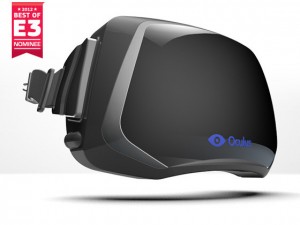
The developers claim that the new headset, Oculus Rift, has “an incredibly wide field of view, high resolution display, and ultra-low latency head tracking” providing the wearer with “a truly immersive experience that allows you to step inside your favorite game and explore new worlds like never before.” Bold claims indeed, but judging by the overwhelming response from the gaming community they might just be on to a winner? At the time of writing, with just under 2 hours to go, the developers have already exceeded their $250K funding target with a massive $2,417,751pledged by 9,445 backers so far.
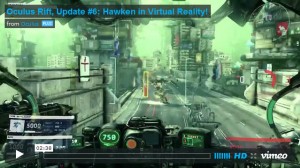
Everyone who pledges to support the project is guaranteed some form of “reward”. Depending on the amount of money pledged these rewards range from a simple thank you and the obligatory T-shirts and posters, up to Early Oculus Rift Developer kits complete with withVR headset, Doom 3 BFG and full Developer support. It all promises to be very “interesting” and even I was caught up with the excitement and chipped in for several developer kits. The kits are due to ship in December 2012. All I can say is, watch this (cyber) space. 😉
For more information please visit:
http://www.kickstarter.com/projects/1523379957/oculus-rift-step-into-the-game
“The Magnificent 7″
Thanks to “First Contact” owner Pat Wall, the latest PowerPC64 beta version of Fedora 17, codenamed “Beefy Miracle”, can now be installed on the AmigaONE X1000 This makes Fedora the 7th GNU/Linux OS that can be installed on the A1-X1000 alongside the AmigaOS.

In 2008, Linus Torvalds, author of the Linux kernel, stated that he used Fedora because it had fairly good support for the PowerPC processor architecture, which he favoured at the time. Although Fedora for PowerPC is now a secondary architecture, Red Hat, its major sponsors, still have a full time Release Engineer dedicated to Power support.
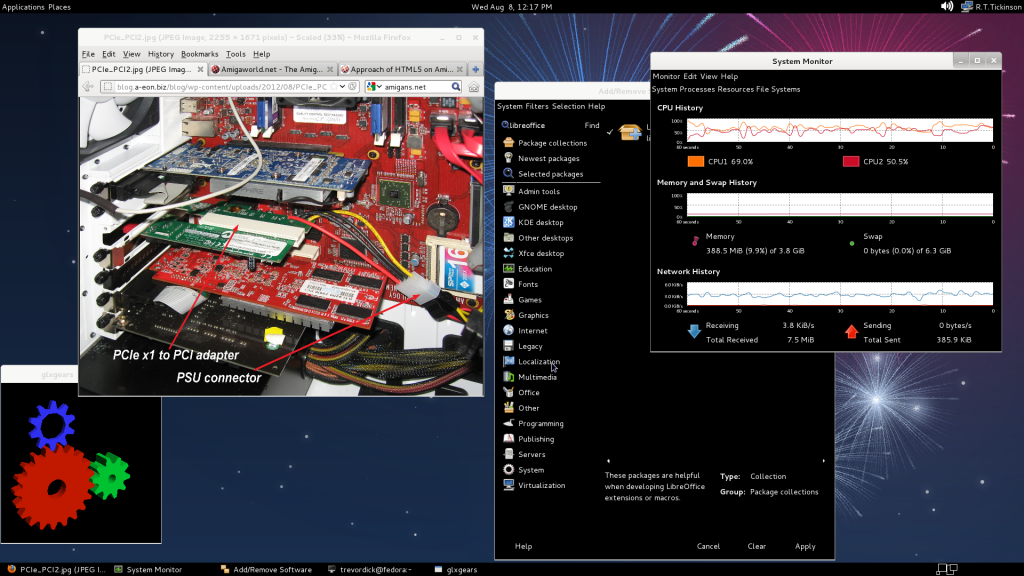
To help simplify the installation of Fedora 17 on the AmigaONE X1000 Pat has created a special pre-configured tarball. As it’s based on the latest PowerPC64 beta version Fedora 17 is definitely WIP, but even at this early stage it supports 2D/3D hardware acceleration for Radeon HD graphics cards thanks to the excellent work of AmigaONE X1000 beta tester Darren Stevens.
It’s a-live: MintPPC 11 – Jumping jack Flash!
Continuing with the Linux theme, Pat Wall has also produced a Live version of MintPPC 11 which runs from an 8GB USB Flash drive. The Live version allows AmigaONE X1000 owners to sample the “delights” of MintPPC 11 without installing Linux on their HDD or disturbing their AmigaOS 4 set-up. I’ve been testing a beta version of the Flash Drive installation and am impressed by what I have seen so far. Pat is adding a few more tweaks and features before we release it to the A1-X1000 beta test team.
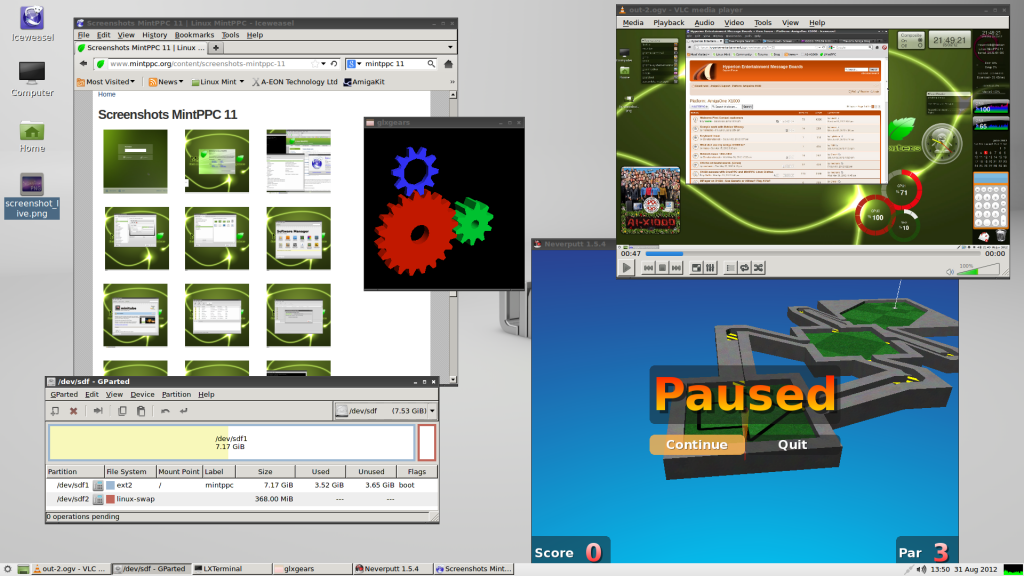
The performance, while not as nippy as a full HDD install, is never-the-less acceptable and will allow anyone to try out MintPPC on their A1-X1000 without installing any software. However, unlike a Live Linux CD-ROM, MintPPC on the USB Flash drive can be customised to suite individual requirements with a massive range of free Linux software available to download. Again 2D/3D Radeon HD hardware acceleration is supported out-of-the-box. Although the Live MintPPC version will fit onto most standard 8GB USB flash drive, larger Flash drives can also be used and the MintPPC partition expanded to take advantage of the additional storage space. You can even install the Live MintPPC partition to a USB HDD which really speeds up the performance and gives you the space to create a fully loaded Linux system without all the hassle of a performing HDD install.
Radeon HD Driver update
Over the past couple of weeks I’ve spent a lot of time testing the new AmigaOS 4 Radeon HD graphics driver with a variety of 5xxx & 6xxx series Radeon HD cards. I’m pleased to report that AmigaOS 4 has worked well with all the cards I’ve tested to date.
These include:
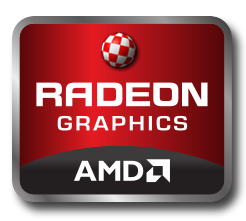
1. Sapphire Radeon HD5450 1GB DDR3 PCI-E HDMI, DVI, VGA, Low Profile Video Card (no fan – passive cooling)
2. Sapphire Ultimate HD5670 1GB GDDR5 PCI-E HDMI/DVI/DP
3. Sapphire Radeon 6570 1G DDR3 PCI-E HDMI/DVI-D/VGA (no fan – passive cooling)
4. PowerColor AX6850 1GBD5-I2DH Radeon HD 6850 1GB 256-bit GDDR5 PCI Express 2.1 x16 HDCP Ready CrossFireX Support Video Card
Thanks to Darren Stevens the Radeon HD 5xxx series cards listed above also work with the Linux distros supported on the A1-X1000. Work is now underway to add support the 6xxx series cards under Linux. They are already supported under AmigaOS 4 🙂
Get your RadeonHD driver here: www.a-eon.com/?page=radeonhd
Keeping a dream alive
Gizmag Magazine, a webzine covering invention, innovation and emerging technologies in computing communications and automation has published an article on the AmigaONE X1000.

In a generally positive review the author Adam Spring writes, “Motorola and PowerPC chip driven computers like the Amiga have widely been confined to the annals of computer history along with their perceived end note: Apple’s move to Intel chips in 2006. What happens, however, when large scale manufacture of such systems is replaced by the desires of enthusiasts to keep a dream and operating system alive? The answer is AmigaOS 4 and AmigaOne X1000.” I can only agree with him!
If you want to read the full article please visit:
http://www.gizmag.com/the-amigaone-x1000-keeping-a-dream-alive/23595/